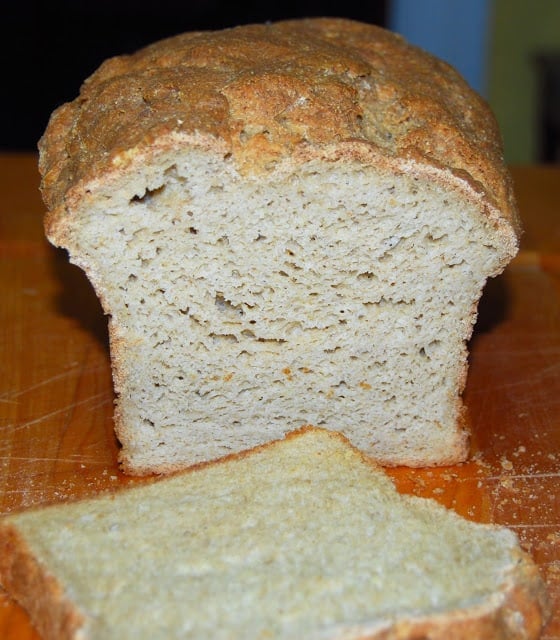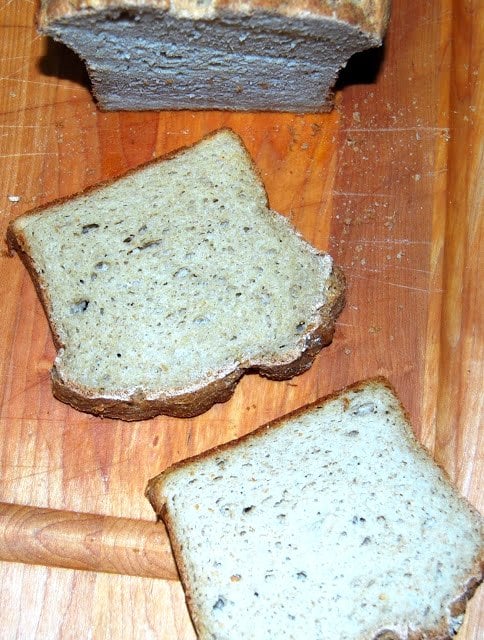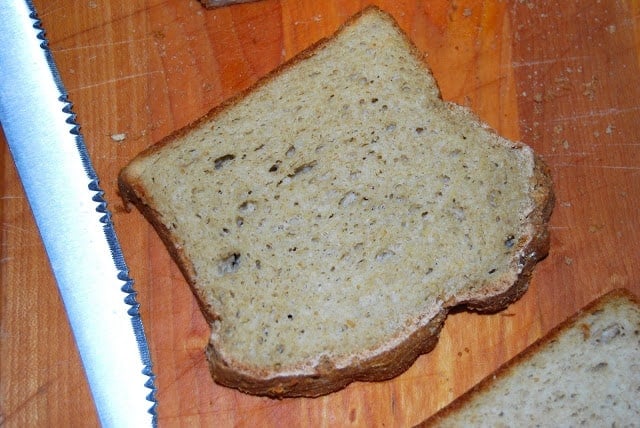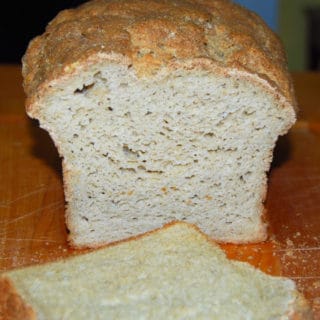I’ve been experimenting more with gluten-free baking, and today I wanted to share a foolproof recipe for a wheat free and therefore gluten free sandwich bread. Vegan, of course. I bake a lot and I love baking breads most of all. But I had rarely baked a gluten free bread, unless you count some Indian flatbreads like bhakris and missi rotis, made with flours like millet and sorghum and corn. So when I rolled up my sleeves and set out to bake a gluten free bread, I did a lot of reading and incorporated a lot of the advice in my recipe. Here’s what I learned:
Start with an open mind, especially if you’re a seasoned baker, because all of your long-held notions about baking bread will be challenged. Gluten free breads present a fundamental conundrum: gluten is the substance that gives breads structure and helps them rise (it’s why you knead bread dough so much– to develop those gluten strands that will stretch and make your bread grow big and light and airy in the oven). So then how do you get a bread that lacks any gluten at all to rise? Relax, because there is an answer: xanthan gum. This thickener adds viscosity and elasticity to a gluten free bread dough, allowing it to rise in a hot oven, much as a wheat bread would. Xanthan gum can easily be found at stores like Whole Foods or online. Take time to mix your ingredients thoroughly, even if there is no gluten to develop. You will find lots of websites that say you don’t need to knead your dough, but trust me, mixing it for a decent period of time ensures that you get your dough to just the right consistency.That’s because gluten-free flours tend to be rather thirsty and you want to give them time to absorb all the liquid they can. Your gluten-free dough will look different: more like muffin batter than the average wheat bread dough. Don’t be tempted to add more flour. The wet dough will help create an airier bread. Also– big bonus!– your gluten free bread needs just one, not two, rises, saving you time. Your baked gluten free bread will also look different. Because of the wet batter, the finished bread will have a rather shaggy look to it, not unlike a banana bread, cracks and all. But who cares when it looks great sliced and tastes even better. Your gluten free bread will taste different, because gluten free flours tend to have a more robust, earthier flavor than wheat does. One of the ways to combat this is to use lighter flours like rice flour and oat flour in combination with some of the stronger-tasting ones, like millet or sorghum.
So now that you are privy to some secrets of successful gluten free baking, let’s fire up that oven and get started. This gluten free sandwich bread uses millet flour, rice flour, and oat flour (be sure to buy one that says gluten free, because some oat flours can be contaminated with gluten while processing) and tastes, I think, as close to a wheat bread as can be. It also toasts really well. Enjoy, all! Check to get new recipe updates by email.
More gluten-free recipes:
Gluten-Free Sourdough Sandwich Bread Gluten-Free Sourdough Boule Gluten-Free Irish Soda Bread Vegan Gluten-Free Naan Savory Cucumber Pancakes
Recipe card



